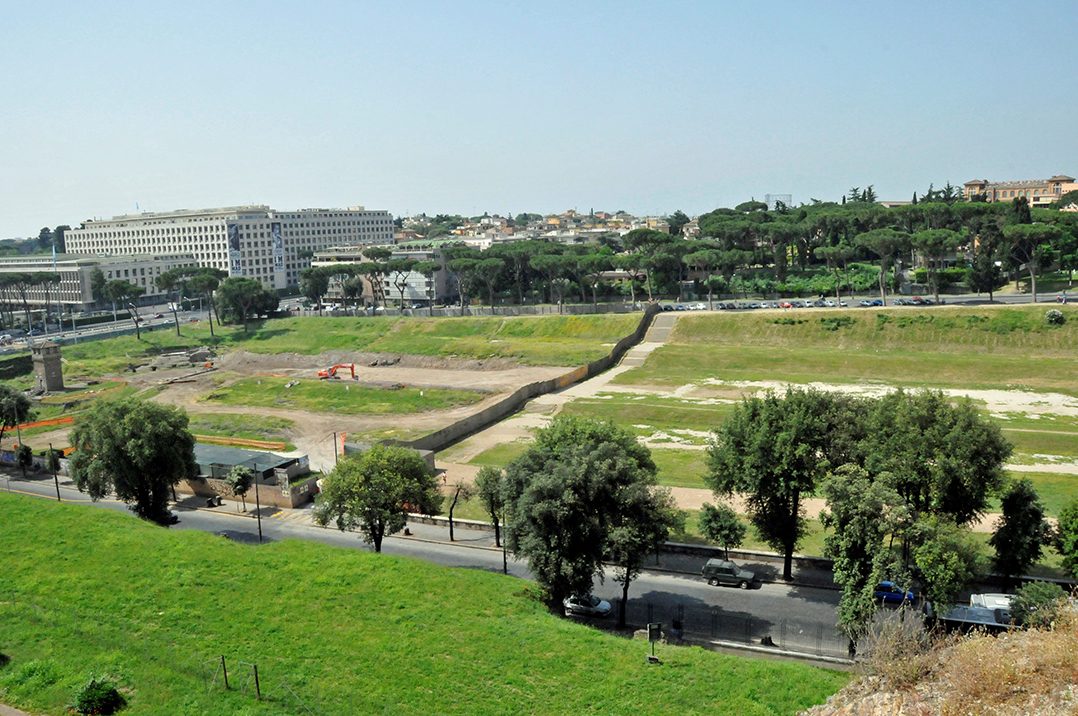Rome’s Colosseum is famous as the place where gladiators often fought to their deaths. It was proceeded by the much larger Circus Maximus a few thousand feet to the southwest.
Perhaps as early as the sixth century B.C., Roman authorities created a track for chariot races in the flood-prone Murcia Valley between Rome’s Aventine and Palatine Hills. The oblong track was about 2,000 feet long and 400 feet wide. Twelve staggered starting gates at one end allowed the simultaneous release of 12 chariot teams onto the sand-covered track. As time went by, wild beast hunts, gladiator fights and public executions drew more and more spectators to the Circus Maximus, or Greatest Circus, some of whom watched from wooden seats along sections of the perimeter. Roman senators watched from stone seats along one turn. Early in the first century B.C., Emperor Pompey staged a wildly popular fight between captured gladiators and 20 elephants. In about 50 B.C., to accommodate the growing crowds, Julius Caesar added seats to accommodate an estimated 150,000 people. The seats were damaged by the great fire of Rome in 64 A.D., leading Emperor Trajan to rebuild the area surrounding the track in stone in about 100 A.D.
Competition from the Colosseum and the Stadium of Domitian, both built in the first century A.D., led to the abandonment of Circus Maximus, which held its last chariot race in 549 A.D. The entire site was eventually buried under accumulating sand and debris and partially excavated beginning in the 16th century. Today, the site of Circus Maximus, much of it still buried, is a public park, used for concerts and other public events and again drawing huge crowds. During the Rolling Stones’ 2014 world tour, they played before more than 70,000 fans at the place where Romans once cheered as gladiators died.



